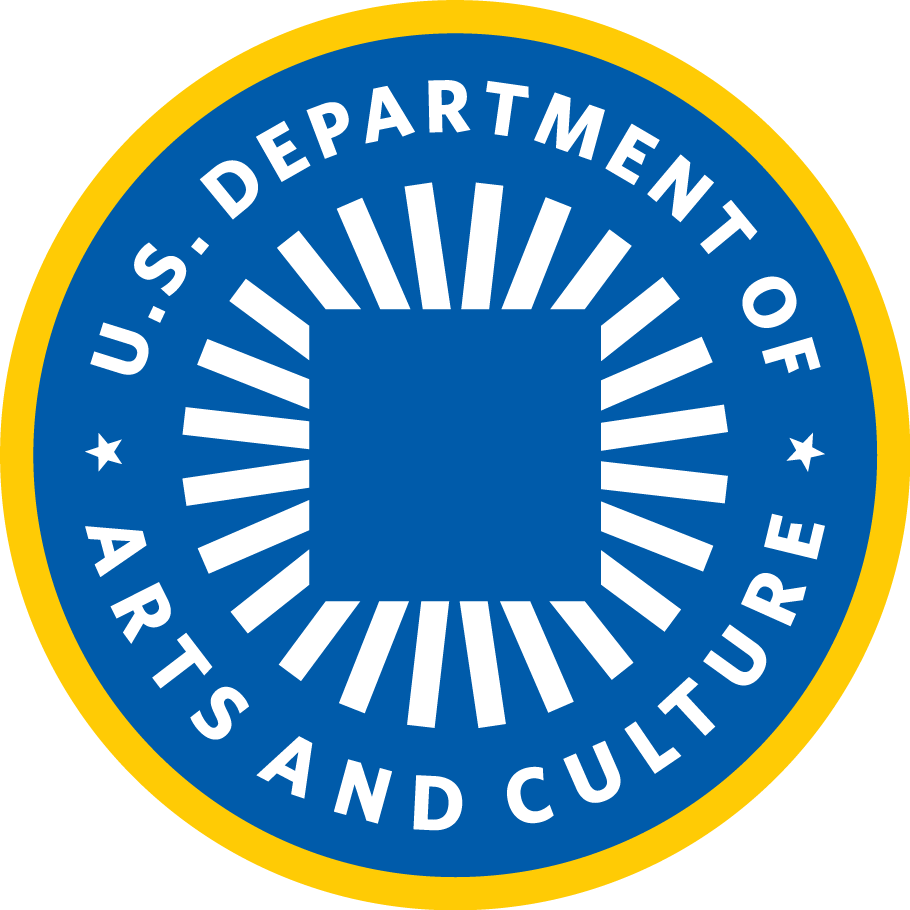On July 4th 2015, the U.S. celebrates 239 years since the signing of the Declaration of Independence. We know exactly what to expect: fireworks, barbecues, flags, parades, and weekend super-sales.
Mobile USDAC HQ by Agent Carissa Samaniego.
But what would it look like to celebrate interdependence? What new civic rituals might we create to mark not just the freedom of one group (thirteen colonies of settlers) from another (Great Britain), but the essential truth that—in the words of civil rights leader Fannie Lou Hamer— “nobody's free until everybody's free”?
To confront the vast challenges of our times—from climate change and planetary degradation to profound economic, racial, and social inequity—we must build a culture of interdependence. We must act from the understanding that we are all inextricably connected to one another and to all of life.
So, this July, in addition to enjoying a hotdog and a night of fireworks, the U.S. Department of Arts and Culture invites you to help cultivate a culture of interdependence. How will you choose to celebrate?
Here are a few ideas to get you started:
1. Public Declaration of Interdependence. Gather friends and neighbors to write a Declaration of Interdependence for performance in a public space. You could each write and deliver your own or compose and perform a text together. Consider arriving at your performance site via an Interdependence Day parade! (Inspiration: Numerous groups have written Declarations of Interdependence, including Greenpeace and members of the 1976 Congress.)
2. “Where We Come From” Potluck. Acknowledging the rich mix of cultural heritage that defines the U.S., host a potluck where each invitee brings a dish and a story that speaks to “where I come from.” In addition to—or instead of—food, you could have participants bring a song or an object that speaks to where they come from. (Inspiration: Public Show & Tell, StoryCircles, Community Cookbook.)
3. Community Self-Portrait of Interdependence in Action. Invite people to capture images of places and projects in the community that demonstrate interdependence in action and to send them to you with captions. Share the images at an event and then turn them into something afterwards (e.g., poster, zine, online exhibit, PowerPoint to share with other organizations in the community).
4. Solutions Bazaar. Who are the people and the organizations in your community working actively to build a culture of interdependence? What projects are showing the way toward a just and thriving future? Host a solutions bazaar, highlighting visionary projects just waiting for more people to get involved. Animate the occasion with live performance and art-making. (Inspiration: USDAC Imaginings, Beautiful Solutions, FEAST.)
5. Pop-Up Community Space. Pick a disused space (e.g., vacant lot), come together to make it inhabitable and install temporary seating. Use it as a site for any of the above. (Inspiration: Pop-Up City.)
Name Tag Day submitted to HILI Database by Eric Boromisa
For more ideas on how to cultivate interdependence in your community (or to submit your own!) you can browse the USDAC’s HILI (High-Impact, Low-Infrastructure) Database. If you decide to do one of these projects, we’d love to hear about it! Send documentation of your interdependence celebrations to usdac.us@gmail.com.
Want to meet and connect with other Citizen Artists across the country working to build a culture of interdependence? The USDAC is hosting a video call on July 14th from 6:30-7:30pm EST and you’re invited! Join us as we learn more about featured HILI projects, share ideas and strategies with one another, and get a sneak peek of how to take part in the USDAC’s next national action. For more details and to reserve a spot on the call, drop us a line at usdac.us@gmail.com with the subject line "Interdependence!"
- Adam Horowitz, Chief Instigator






![So where do you live? [installation from the Fragile City series] Dyed cheesecloth, monofilament Priscilla Stadler 2014](https://images.squarespace-cdn.com/content/v1/5220c2ece4b0407999540a76/1434487157940-5XQ221U3P1XHW87VT4O1/image-asset.jpeg)





